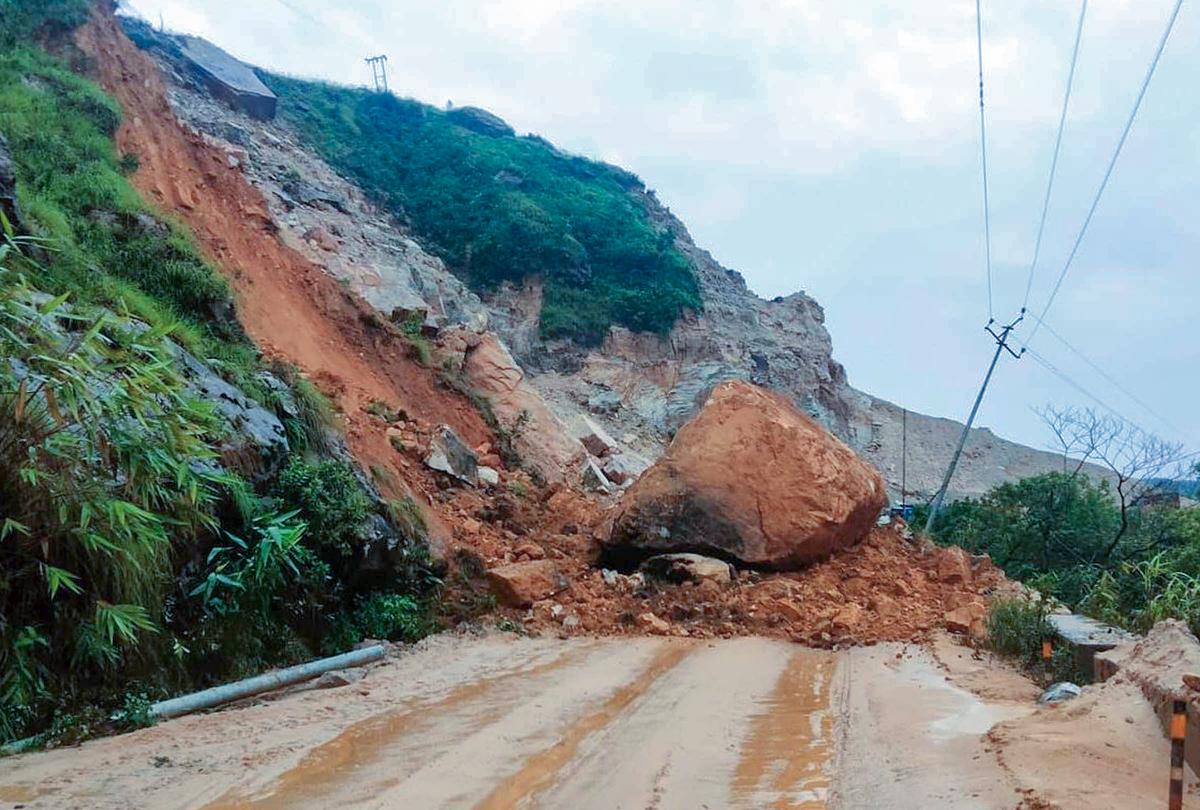
Mizoram Urges Citizens to Harvest Rainwater After Rains Damage Pipelines and Pumping Stations

 :
| Updated On: 06-Jun-2025 @ 3:39 pm
:
| Updated On: 06-Jun-2025 @ 3:39 pmSHARE
In the wake of continuous torrential rainfall and widespread landslides across Mizoram, the state government has issued an urgent advisory for citizens to harvest rainwater as a preventive measure against a looming water crisis. The intense rainfall has wreaked havoc on vital water infrastructure, including pipelines and pumping stations, disrupting water supply systems in multiple districts.
According to the Mizoram Public Health Engineering (PHE) Department, the capital city Aizawl is facing potential water scarcity. The primary water source, the Tlawng river, has become flooded and extremely turbid, preventing the pumping of clean water. As a result, the city is at high risk of facing severe water shortages in the coming days.
In Kolasib district, the situation is equally critical. Gravity-based pipelines and monoblock systems that supply water to five towns have sustained severe damage. These systems are essential for transporting water from its source to treatment plants and then to the households. The disruption in these systems has led to a breakdown in regular water supply.
Residents across the affected areas, particularly in Aizawl, have been urged to use water judiciously and take advantage of the ongoing rainfall by harvesting rainwater. The department has emphasized the importance of conserving water, given the widespread damage and delays in restoration efforts.
In the Khawzawl district, another key water source—the Tuivawl river—has become heavily contaminated due to the rains. The contamination has rendered the local water treatment plant ineffective, further compounding the crisis in the area. Similarly, in the Hnahthial district, flooding of the Tuichang river has damaged both the raw water pump and its control panel. This has disrupted both the water and electricity supply in the region, making the situation more challenging for the residents.
The PHE department has also extended similar warnings and appeals for conservation in the Mamit and Siaha districts. In these areas, mechanical failures and flooding-related issues have severely disrupted water supply systems. The situation is compounded by the remote and hilly terrain of Mizoram, which poses additional challenges in repairing infrastructure and restoring services swiftly.
The scale of the crisis is highlighted by data released from the State Emergency Operation Centre under the Disaster Management and Rehabilitation Department. As of Thursday, 769 incidents of landslides and mudslides have been reported across the state. These natural disasters have resulted in the evacuation of 452 families. Among them, 338 families were displaced after their homes became unsafe due to landslides, while 114 families had to be evacuated due to flooding.
In terms of structural damage, a total of 272 houses have either collapsed or suffered significant damage. Tragically, the calamities have also claimed lives. At least five people, including three refugees from Myanmar, have died as a result of landslides, floods, and house collapses triggered by the relentless rain.
Overall, the situation in Mizoram remains precarious, with authorities continuing to monitor the weather conditions and provide relief to affected communities. The government’s appeal for rainwater harvesting and water conservation stands as a critical step to mitigate the impact of disrupted water supply systems across the state.
Contact Us
House. No. : 163, Second Floor Haridev Rd, near Puberun Path, Hatigaon,Guwahati, Assam 781038.
E-mail : assaminkcontact@gmail.com
Contact : +91 8811887662
Enquiry
×
Reporter Login
×